< more recent | 22-30 April 2019 | older >

29 April 2019: The drive south from Ely back down to Minneapolis wound through some beautiful wilderness before reaching the edge of the suburbs and then the urban center. Pristine lakes and woodland terrain encouraged a few stops along the way …
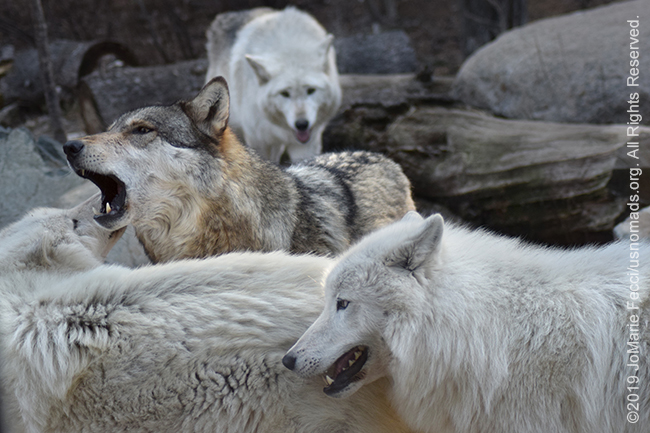
28 April 2019: We had some amazing opportunities to closely observe pack behavior and learn a bit about how these animals interact with each other and their larger environment, and the results of our tracking would help the researchers in their long term study of the area packs. On the final day of the program we were able to discuss the on-going studies and were briefed on some of the larger issues relating to conservation and controversy surrounding the wolves …
![]()
27 April 2019: There were three wild wolf packs with territories in the vicinity of the International Wolf Center, and we had the frequencies of three individuals (one member of each of the area packs) that we were trying to locate. We were able to successfully locate two of them, noting their position on range maps, which would be shared with the researchers studying pack behavior in this area…
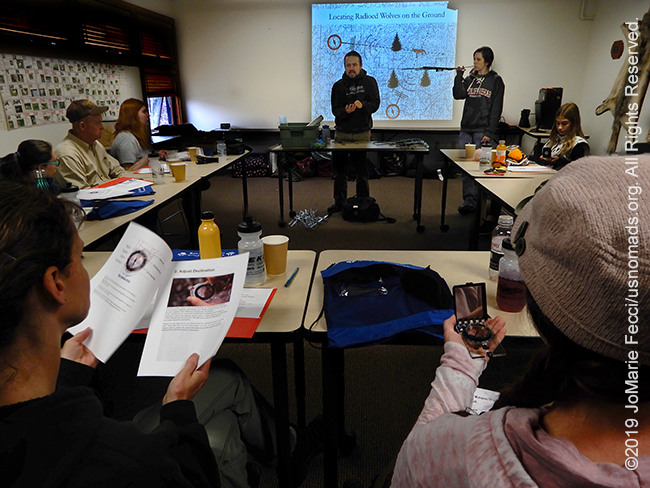
27 April 2019: Before heading into the wilderness, the team got a short but intensive training on using telemetry equipment to locate animals that had been fitted with radio collars by triangulating their positions once we picked up a signal…
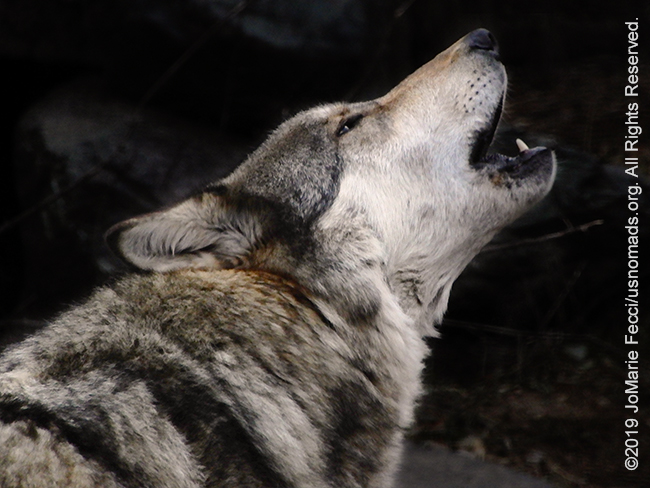
26 April 2019: With the approach of darkness, the ambassador pack began the howling that is so emotive, and their song was echoed by other wolves far beyond the center’s territory…
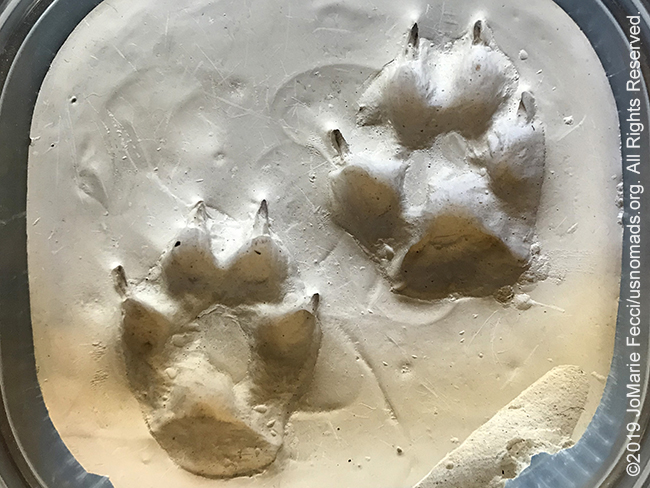
26 April 2019: The evening was spent learning some basics about wolves and their habitat and behavior. We also got a quick course on how to recognize their tracks and differentiate them from other similar animal tracks…
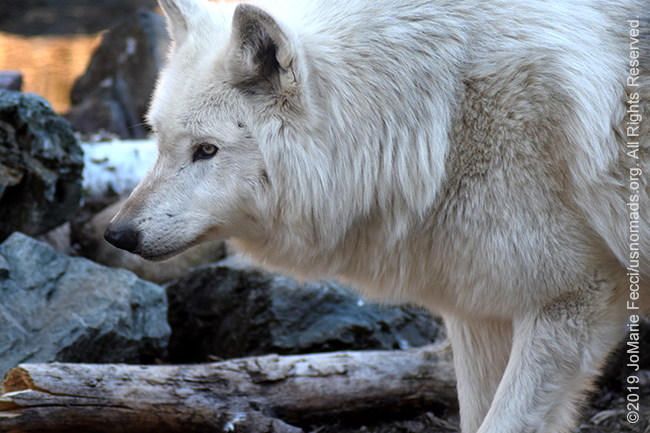
26 April 2019: Arrived to the International Wolf Center for the first day of the three-day Track the Pack program and got to meet the “ambassador” wolves. The “ambassadors” are a wolf pack that lives on the center’s property, where they can be closely observed and studied in their natural habitat. Currently there are four “ambassadors,” Denali, a northwestern gray wolf, Boltz, a great plains gray wolf, and Axel and Grayson, arctic gray wolves that are brothers…
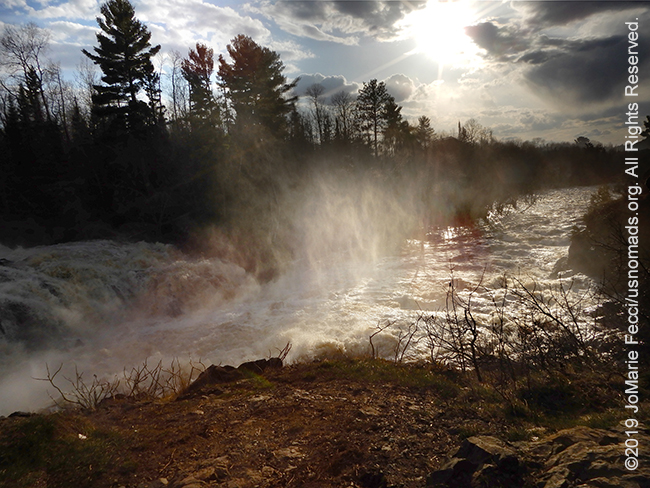
25 April 2019: Got to explore a bit of these northern woods, with a short hike out to Kawashiwi Falls where the views really are awe-inspiring, and it is possible to feel the raw force of nature all around…
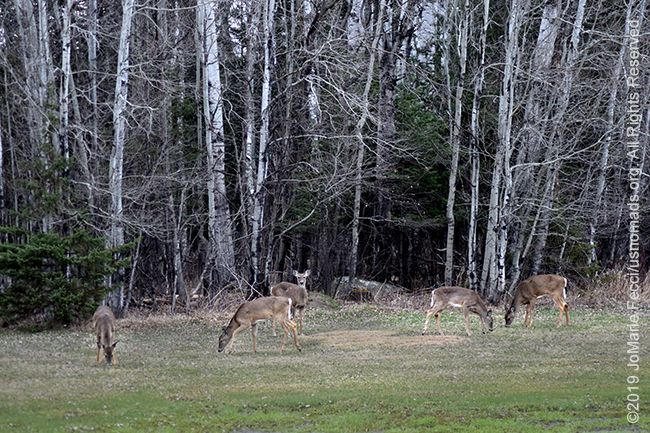
24 April 2019: Arrived in Ely, Minnesota, not far from the US-Canadian border this evening, and had to be super-vigilant drving through a “gauntlet” of deer grazing along side the road — looking like they were ready to saunter into the street at any moment…
THIS MONTH:

Taking part in a field research weekend at the International Wolf Center in Ely Minnesota. The “Track the Pack” event focuses on wolf research and management, as we join IWC biologists and learn to use telemetry equipment in the field to locate and study wild wolves in the area. We will spend time trekking through the forest in search of signals from a wild wolf pack, and also have an opportunity to observe the programs’ “ambassador wolves” at the center to gain insight into the animals’ behaviors and the functioning of a pack …
COMING UP SOON:

Participating in this year’s Ladies Offroad Challenge which begins May 13th and continues for ten weeks. Designed by Charlene Bower as a fun way of building skills, the challenges offer something for everyone, and can be as hard or easy as desired — though at least one is designed to push participants outside their comfort zones…

Heading to the Jeep Invasion and the 9th annual Bantam Jeep Heritage Festival, June 7-9, in Butler, PA. The Bantam Jeep Heritage Festival is a tribute event to the original jeep, the history behind it, the people who created it, and its birthplace, Butler Pennsylvania. The event provides Jeep enthusiasts with on and off-road experiences that embrace the vehicle’s past and the lifestyle it now fosters. The family-friendly event is held at Coopers Lake Campground, about an hour north of Pittsburgh, PA every year with on-site off-road trails, a Jeep “playground” obstacle course, Jeep History exhibit, huge vendor area with 150 companies and more…

Joining the ladies at Woman and Machine New England for a day of automotive learning fun focused on cars, engines, welding, and more. This automotive educational and networking event is designed for those who want to understand more about their vehicles and/or explore the skill sets that make up various realms within the automotive industry. The event is open to everyone from seasoned professionals to the wrench-curious ladies who are interested in learning more about cars from other women …

Attending the Ladies Offroad Network Convention in Atlanta, GA. The 3rd annual convention will be held August 1-4, 2019, with lots of hands-on opportunities to gain all types of offroading skills, learn and engage with other offroad ladies as they share their stories, and laugh the whole way. The convention is an action-packed, interactive 4-day weekend educating, motivating, and guiding offroad ladies…

Back to Pennsylvania Coal Country to guide for the 2019 Women’s Wheeling Day at Rausch Creek Offroad Park hosted by Jeep Girls Rock. The day focuses on learning, enjoying the trails and meeting new friends, and is for all trail levels, from beginners to advanced. Female Guides will be assigned to each group and will encourage those who have never wheeled before as they build confidence out on the trails and learn what their vehicle is capable of (guys are welcomed to attend and ride along with women drivers at this family event) …
ABOUT THE GRAY WOLF
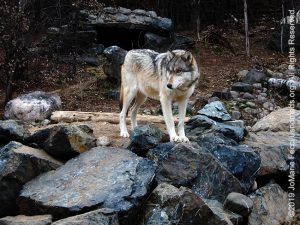
The gray wolf, also known as the timber wolf or tundra wolf, is a canine native to the wilderness and remote areas of Eurasia and North America. It is the largest member of the Canis species, with males averaging 43–45 kg (95–99 lb) and females 36–38.5 kg (79–85 lb). It is the only species of Canis to have a range encompassing both Eurasia and North America, and originated in Eurasia during the Pleistocene, colonizing North America on at least three separate occasions during the Rancholabrean. The gray wolf is a social animal, traveling in family “packs” that consist of a mated pair, accompanied by the pair’s adult offspring. The gray wolf is an apex predator throughout its range, with only humans and tigers posing a serious threat to it. It feeds primarily on large ungulates, though it also eats smaller animals, livestock, carrion, and garbage. The global gray wolf population is estimated to be 300,000. The gray wolf has a long history of association with humans, having been despised and hunted in most pastoral communities because of its attacks on livestock, while conversely being respected in many agrarian and hunter-gatherer societies…
WOLF HABITAT
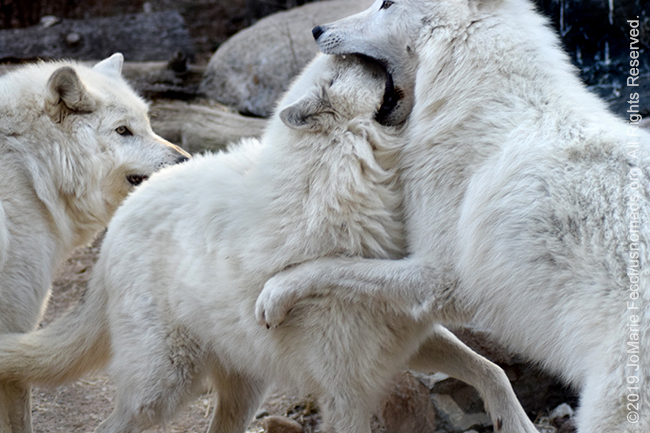
Wolves were once the most widely distributed, wild terrestrial mammals. They inhabited most of the available land in the northern hemisphere. Due to the destruction of their habitat and persecution by humans, they now occupy only about two-thirds of their former range worldwide, and only about 5-8 percent of the contiguous 48 United States. Wolves can live in a variety of climates and habitats, and wolves living in different geographical areas have distinct physical characteristics, which are used to differentiate types, or subspecies, of gray wolves around the world. The subspecies of gray wolves in North America include the Arctic wolf (Canis lupus arctos), northwestern wolf (Canis lupus occidentalis), Great Plains wolf (Canis lupus nubilus), Mexican wolf(Canis lupus baileyi) and the eastern timber wolf (Canis lupus lycaon).
Wolves can survive anywhere there is a sufficient number of large ungulates such as deer, moose, elk, caribou, bison, and musk ox. In Minnesota, the white-tailed deer is the wolf’s primary prey, with moose, beaver, snowshoe hare and other small mammals mixed in. Wolves require at least 3.7 pounds of meat per day for minimum maintenance. Reproducing and growing wolves may need 2-3 times this much. It has been estimated that wolves consume around 10 pounds of meat per day, on average. However, wolves don’t actually eat everyday. Instead, they live a feast or famine lifestyle; they may go several days without a meal and then gorge on over 20 pounds of meat when a kill is made…
ABOUT ELY MINNESOTA

Ely, Minnesota, voted coolest small town in America in 2010, is a favorite summer destination for thousands. Ely is an unusual small town, with a permanent population of just under 4,000, and a rich history peopled with lumberjacks and miners. It is also the gateway to the Boundary Waters Canoe Area Wilderness (BWCAW), a unique geological area created by great glaciers that carved the rock. The glaciers left behind rugged cliffs and crags, canyons, gentle hills, towering rock formations, rocky shores, sandy beaches and several thousands lakes and streams, interspersed with islands and surrounded by forest. Located in the northern third of the Superior National Forest, the BWCAW is over one million acres in size, extends nearly 150 miles along the international border adjacent to Canada’s Quetico Provincial Park and is bordered on the west by Voyageurs National Park. The BWCAW contains 1175 lakes varying in size from 10 acres to 10,000 acres, over 1200 miles of canoe routes, 12 hiking trails and over 2,000 designated campsites. The BWCAW contains the largest contiguous areas of uncut forest remaining in the eastern United States. Under the administration of the U.S. Forest Service, the BWCAW has become one of the most visited wildernesses in the United States…
Nesconset | Paris | Belgrade | Tremont | Minneapolis | Ely
MORE NOTES FROM THE ROAD:
16-21 April – PA Trails
1-15 April – New Jeep
15-31 March – Paris
1-14 March – Arizona
15-28 February – San Antonio
1-14 February – Sedona and Glamis
January – Iran
December – Holiday Road Trip
16-30 November – Senegal
1-15 November – Paris
October – New York
September – Southwestern Deserts
22-31 August – New York
8-21 August – Serbia
1-7 August – Ladies Offroad Network
22-31 July – Moab
9-21 July – Woman and Machine
1-8 July – DC Dirt Camp
25-30 June – Orienteering
1-24 June – Paris
7-10 June – Bantam Jeep Festival
1-6 June – Roadtrip to Bantam JeepFest
May – Wheelers Overland
Archive
REFLECTIONS
A quick overview of impressions from a stop in Cairo during our recent scouting mission in Egypt and Sudan … [read]
SPECIAL REPORT
A look into south-eastern Algeria on the border with Libya and Niger: overlanding with the Tuareg in one of the most remote corners of the Sahara … [read]